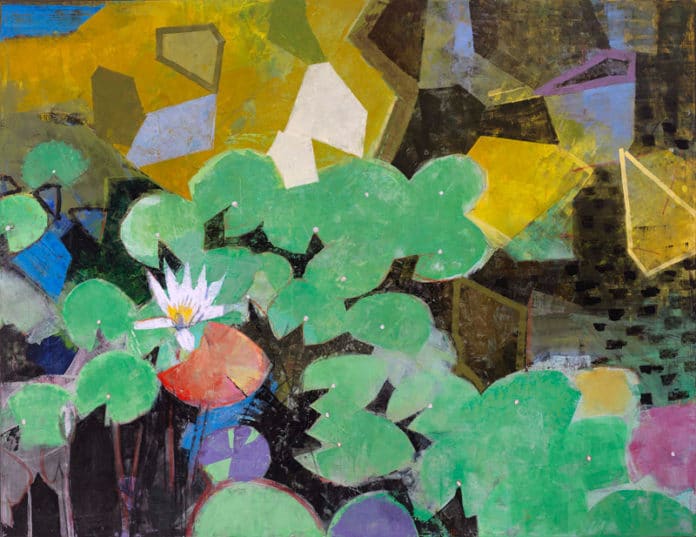Where is the line between art and nature? Depending on who you ask, that line could be well-defined or blurred. The latter would be the case for artist John Evans, whose works are currently on display during a solo exhibition here.
Eight large-scale, playfully composed paintings of leafy botanic gardens and bays of water by artist John Evans are the subjects of a solo exhibition currently on view at Gallery Henoch in New York City. According to the gallery, “Evans does not describe a specific location; rather he elicits the feel of a simplified, yet universal place. He seeks to supplement our perspective of the real with a painterly vision.”

Evans added, “I visualize the world as a series of collages made of natural forms and concrete structures. In these paintings, I take apart each image and re-image the parts.” Evans is continually puzzling together taut design with energetic brushwork. He is careful to maintain a sense of immediacy in the execution. “It brings pleasure to observe works that merge a visual dance with a meditation. It is an aspiration for each painting I do.”
The exhibition, titled “Time & Place” continues through October 28. To learn more, visit Gallery Henoch.
This article was featured in Fine Art Today, a weekly e-newsletter from Fine Art Connoisseur magazine. To start receiving Fine Art Today for free, click here.







